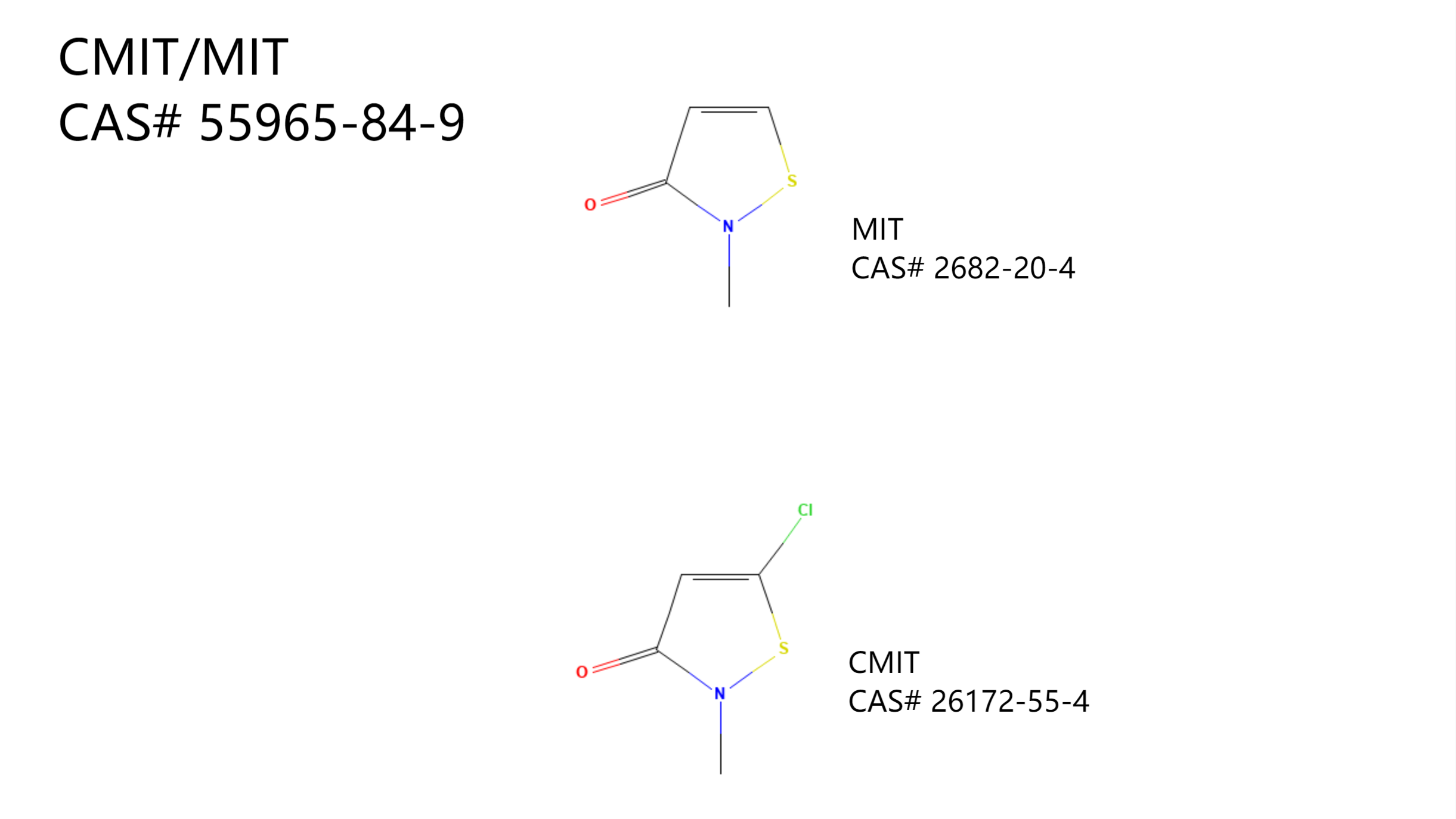CMIT/MIT;
3(2H)-Isothiazolone,5-chloro-2-methyl-,mixt. with 2-methyl-3(2H)-isothiazolone;
CAS Number: 55965-84-9;
Synonyms: Isothiazolin;
Chemical names:
5-Chloro-2-methyl-3(2H)-isothiazolone, mixture with 2-methyl-3(2H)-isothiazolone;
Biocidal active substances:
CMIT/MIT is mixture of CMIT (CAS#26172-55-4) and MIT (CAS# 2682-20-4), and widely used as biocidal active substance in many fields.
It is a broad-spectrum, highly effective, low-toxicity, non-oxidizing biocide.
Bactericidal mechanism:
CMIT/MIT are biocidal by breaking the bonds of bacterial and algal proteins. After contacting with microorganisms, isothiazolinone can rapidly and irreversibly inhibit their growth, thus leading to the death of microbial cells, so it has strong inhibitory and killing effects on common bacteria, fungi and algae.
CMIT/MIT has high biocidal efficiency and good degradability, and is characterized by no residue, safe operation, good compatibility, strong stability and low cost.
Uses:
CMIT/MIT is widely used in cooling water treatment, oilfield chemicals, papermaking, metal cutting fluids, leather, ink, adhesives, paints, detergents, and other industries.
CMIT/MIT is miscible with chlorine and most anionic, cationic and nonionic surfactants, emulsifiers.
At high dosage, CMIT/MIT has significant effect on biological slime stripping.
pH range of 2 to 9 can be used.
When used in water treatment, first diluted into 1.5% aqueous solution. Then, depending on the growth of bacteria and algae, dosing 1 to 2 times a week, the dosage of 80ppm to 100ppm (CMIT/MIT 1.5% solution).
Technical Data:
| Appearance | Yellow or yellow-green transparent solution |
| Content of active substance [%] | 14 to 14.5 |
| Ratio of CMIT/MIT(mass fraction) | 2.5 to 3.5 |
| pH value | 2.0 to 4.0 |
| Density [g/ml] | 1.27 to 1.33 |
Precautions:
1) CMIT/MIT 14% should avoid direct contact with eyes. Once contacted, flush with plenty of water without delay. Do not contact with skin for a long time.
2) Do not contact with reducing metals, such as metal iron, aluminum, etc. during storage to avoid decomposition.
3)This product has poor stability in alkaline with pH>9.0 and should not be used. The compounding of chemicals with strong nucleophilicity, such as S2- and R-NH2, will lead to the decrease of the quality of the product, or even the complete failure of the product.
Package and storage:
25kg, 250kg, 1000kg, 1250kg per plastic drum, in cool and shaded place.
The shelf life is one year, under the protection from light and normal temperature.
It should not be in direct contact with metal containers such as ironware, during storage.




